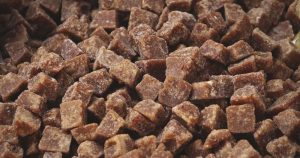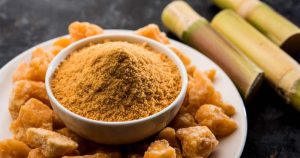

The world of natural sweeteners offers a diverse range of options, each with its unique flavor profile and potential health benefits. Two prominent contenders in this arena are jaggery and honey. As health-conscious consumers seek alternatives to refined sugar, the debate between jaggery and honey has gained momentum. In this article, we delve into the characteristics of jaggery and honey, comparing their nutritional content, health benefits, and taste profiles to help you make an informed choice.
Jaggery, derived from sugarcane or palm sap, is rich in minerals like iron, calcium, and potassium. It also contains dietary fiber, which aids digestion and promotes gut health. Jaggery’s nutritional content varies depending on the source and processing method.
Honey is a natural sweetener produced by bees from flower nectar. It contains trace amounts of minerals and vitamins, but its main nutritional component is carbohydrates, primarily fructose and glucose. Honey’s nutrient content can vary based on the types of flowers the bees collect nectar from.
Jaggery has a lower glycemic index (GI) compared to refined sugar, meaning it causes a slower and steadier rise in blood sugar levels. This can be beneficial for individuals looking to manage their blood sugar.
Honey has a slightly higher glycemic index than jaggery, but it still has a milder impact on blood sugar compared to refined sugar. However, it’s important to note that excessive consumption of honey can still lead to blood sugar spikes.
Jaggery contains antioxidants like phenolic compounds, which help combat oxidative stress and inflammation in the body. The darker the jaggery, the higher its antioxidant content.
Honey is also known for its antioxidant properties, attributed to compounds like flavonoids and phenolic acids. The type of honey and its floral source influence its antioxidant profile.
Jaggery is valued in traditional medicine for its potential digestive benefits, iron supplementation, and soothing effects on the respiratory system. Its mineral content supports overall health and well-being.
Honey has been used for its potential antibacterial and wound-healing properties. It’s often used as a natural cough remedy and may have a soothing effect on sore throats.
Jaggery boasts a distinct, earthy flavor with notes of caramel and toffee. Its flavor can vary based on the type of sugarcane or palm used and the production process.
Honey’s flavor varies widely depending on the flowers the bees gather nectar from. It can range from floral and fruity to robust and earthy, offering a diverse taste experience.
Jaggery is commonly used in traditional Indian sweets, snacks, and savory dishes. Its rich flavor enhances both sweet and savory preparations, making it a versatile ingredient.
Honey is a popular sweetener in various cuisines and can be drizzled over yogurt, oatmeal, and desserts. Its diverse flavor profiles make it suitable for a wide range of dishes.
Jaggery is generally considered safe and doesn’t commonly cause allergies or sensitivities. However, individuals with a specific sensitivity to sugarcane or palm products should exercise caution.
Honey allergies are rare, but they can occur in individuals who are allergic to pollen or bee products. Honey consumption is not recommended for infants under one year of age due to the risk of botulism.
Jaggery production involves traditional methods that are less energy-intensive compared to industrial processes. However, factors like land use and water consumption vary based on the source and scale of production.
Beekeeping practices can have positive impacts on pollination and biodiversity. However, honey production can also be resource-intensive and may raise concerns about the well-being of bee colonies.
The choice between jaggery and honey ultimately depends on your taste preferences, nutritional goals, and dietary considerations. Both options provide natural sweetness and potential health benefits, but their characteristics differ in terms of flavor, nutritional content, and environmental impact. By understanding these differences, you can make an informed decision that aligns with your personal preferences and health aspirations.




Copyright © 2024 Desigud.in All Rights Reserved